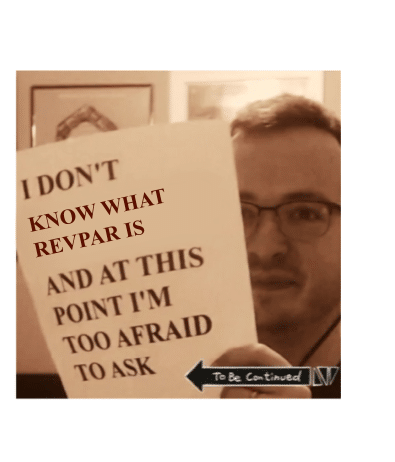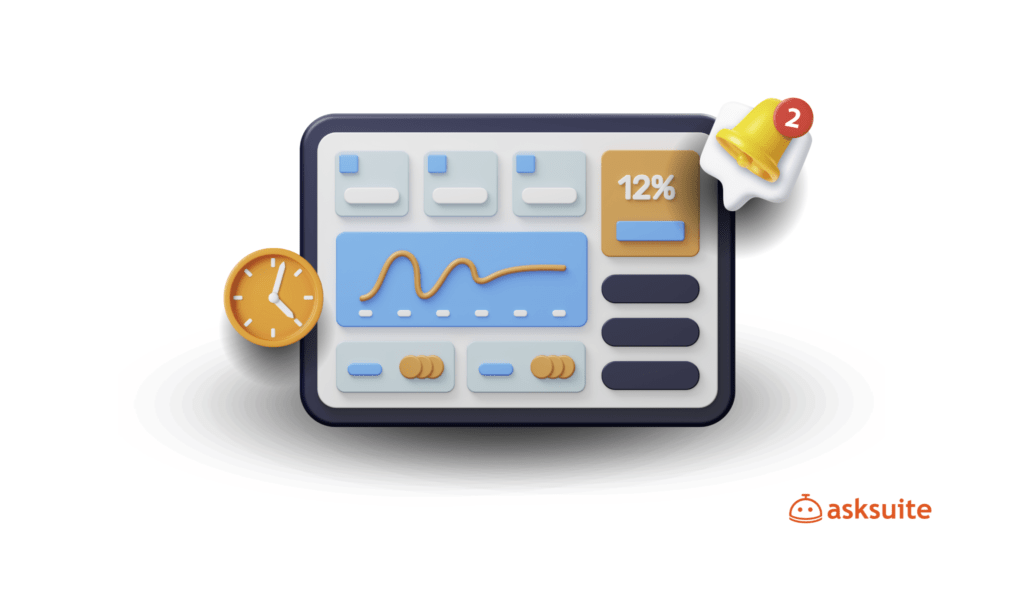Do you know what RevPar is and what is the fastest way to boost profits? Is it by increasing the occupancy rate? Well, maybe selling at any cost might increase the Revpar number, but the damage can be far bigger…
In the rush and despair of increasing revenue, many times revenue professionals forget the basics: profitability. And that is why, at the end of the day, the best way – yet not the fastest- to grow RevPar is through the average daily rate (ADR).

What is RevPar and the RevPar formula?
RevPar stands for revenue generated per available room. It is the key performance indicator (KPI) in the hotel industry and it’s considered more important than the occupancy rate. It takes into account the balance between occupancy and the average daily rate (ADR).
In practice, it’s the simulation of the average daily rate in a full occupancy scenario. The higher the RevPar, the more money you are gaining per room. It’s the hotel’s performance turned into money!
This is the KPI that the sales and finance departments should always keep an eye on. Not only to the hotel’s RevPar but also the RevPar Index, which is an indicator of if your hotel is getting the expected market share amongst its Compset – more about the RevPar Index later on in the text, keep reading it!
⚠ Caution!! RevPar might be growing, but the hotel might be, in fact, not doing so well.
Whoever is auditing the hotel finances (owner, General Manager, Revenue Manager) knows the importance of the balance between revenue and expenses. That’s why it’s imperative to understand that RevPar is only the first step to understanding the hotel’s performance.
RevPar calculation

There are two basic formulas to calculate RevPar. For the first one is to multiply your average daily rate (ADR) by your occupancy rate:
RevPar = ADR x Occupancy Rate (%)
Example: If you have occupancy at 60% and your ADR is $100, your RevPar will be $60.
The second one is dividing the total number of rooms available in your hotel by the total revenue from the night.
RevPar = Total revenue from the night / total number of rooms available.
How does the traveler acquisition cost impact the hotel RevPar?
A better way to understand the hotel’s performance is to adjust the RevPar to the expenses. For instance: imagine that your cost per room is $10,00. This is your fixed cost per room to keep it running.
If you have 10 available rooms, which of these scenarios would you prefer? (Just to make it simple, imagine that your non-occupied rooms don’t represent any cost to your hotel)
Scenario 1
RevPar : occupancy Rate 80% x ADR $50,00 = $40,00
Total Revenue = RevPar x available rooms = $400,00
Real Revenue: Total Revenue – total expenses of the occupied rooms (8x$10,00)
$ 400,00 – $ 80,00 = $320,00
Scenario 2
RevPar: 100% of occupancy rate x $45,00 (ADR) = $45,00
Total Revenue = $45,00 (RevPar) x total of rooms available = $450,00
Real Revenue = Total Revenue – total expenses of the occupied rooms (10x $10)
$450,00 – $100,00 = $350,00
IMPORTANT: The higher your occupancy rate, the bigger your operational costs.
You would prefer Scenario 2, right? And it is because of this managers usually reduce the daily rate to increase the occupation rate. But is this really a good strategy?
In the case above, yes: the higher occupancy rate makes up for the drop in the average daily rate, even with more operational costs.
However, this strategy can backfire because it doesn’t take into account the variable, acquisition, and distribution costs.
How to calculate the NetRevPar
Let’s imagine that, in order to increase your occupancy rate, you had to increase the budget for Ads on social media. Therefore, the cost per room went from $10,00 to $20,00.
So we now have:
Scenario 1 (with ads) : Total Revenue – total expenses = $400,00 – $160,00 (8x $20,00) = $240,00
Scenario 2 (with ads) : $450,00 – $200,00 = $250,00
Did you notice that the real revenue is getting smaller and the expenses bigger? This is the NetRevPar, the net income per room.
In this scenario, the average daily rate is vital to keep the RevPar growing. That means that in some cases the average daily rate only compensates for the low occupancy rate IF the acquisition cost doesn’t increase.
In those examples, we are discussing only direct bookings. Nevertheless, it is also important to remember the costs of OTAs’ commissions. But we can argue about this in another post.
Including the total revenue to calculate TrevPar
You now understand how to deduct RevPar’s operational costs. In both examples above, we were only talking about the revenue generated through bookings.
However, the hotel can also generate revenue through events and additional services, like a restaurant or spa, or food and beverages. This is what we call TrevPar, the total revenue per available room.
Usually, this indicator is used by resorts because of the variety of services they offer. It is also used to calculate the revenue of a hotel with a social or corporate event structure.
It’s basically the same formula as the Revpar but takes into account revenue from all departments of the hotel. Look at this example:

Source: Mario Cezar Nogales’s article for Revista Hotéis
We can see here that around 40% of the hotel’s revenue comes from other sources than bookings. Of course, this percentage is not the same for every hotel.
This kind of information is very relevant if you want to balance your occupancy with extra revenue. With that in mind, the revenue management strategies aim to optimize the revenue per room without jeopardizing the hotel’s profit, using additional revenue generated by upselling and other services, in addition to the good management and optimization of costs.
RevPar Index: getting market share from the competition
Your RevPar might be increasing, but that doesn’t mean that your hotel is performing well when you compare it with the numbers of your Compset.
So RevPar Index is the division between your RevPar and market average:
RevPar Index: your RevPar / average market’s RevPar x 100
Above 100% means that you are getting market share and less than 100% means that you are losing market share.
The market share, in percentage, represents your participation in the market regarding your total sales, revenue, or a number of clients. In the RevPar Index case, it means your level of competitiveness in the hotel industry.
The comparison might be made between the average of the market or of your Compset: it can be the average RevPar of all units of a hotel chain or the average of your competitiors.
There are magazines and publications that can provide a comprehensive view of RevPar and the market. For instance, SDR is a well-known company that provides data benchmarking and analysis for global hospitality sectors.
Keep an eye on your numbers, but also on the market!
*translated from the original “Como aumentar o RevPAR sem pôr em xeque a rentabilidade do hotel” by Paula Miranda.




